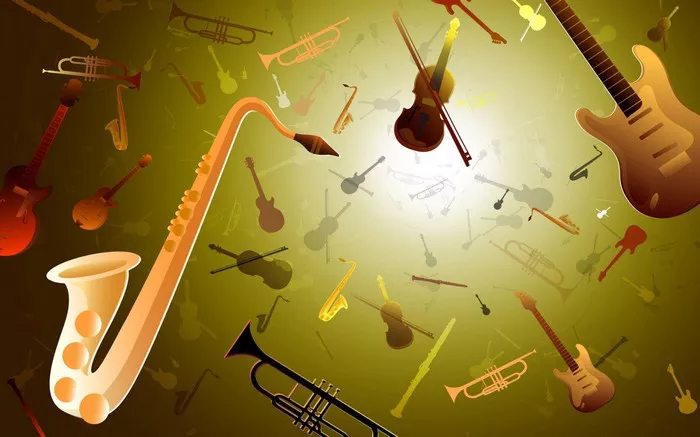Classical music has always been a genre that explores the depth of human emotion and the beauty of our world. One of the most captivating works in classical music is Gustav Holst’s “The Planets.” This suite of seven movements captures the essence of our solar system’s planets through music. Each movement represents a different planet and its astrological influence.
I. Background of Gustav Holst
Gustav Holst was an English composer born in 1874. He was heavily influenced by astrology and the mystical. Holst’s interest in astrology inspired his most famous work, “The Planets.” The suite was composed between 1914 and 1917 and is one of the most significant works in the orchestral repertoire.
II. Overview of “The Planets” Suite
“The Planets” is a suite of seven movements, each named after a planet and its corresponding astrological character. The movements are:
Mars, the War Bringer
Venus, the Bringer of Peace
Mercury, the Winged Messenger
Jupiter, the Bringer of Jollity
Saturn, the Bringer of Old Age
Uranus, the Magician
Neptune, the Mystic
Each movement of “The Planets” is a vivid musical depiction of the planet it represents. Holst’s use of orchestration, rhythm, and melody creates a unique portrayal of each celestial body.
1. Mars, the War Bringer
“Mars, the War Bringer” is the first movement of the suite. It is one of the most famous pieces in the suite, known for its powerful and aggressive character. The movement starts with a relentless, driving rhythm that conveys the feeling of impending conflict. The use of brass and percussion creates a sense of urgency and power. The music represents the destructive force of war and the impact it has on humanity.
2. Venus, the Bringer of Peace
The second movement, “Venus, the Bringer of Peace,” contrasts sharply with the first. It is calm and serene, reflecting the qualities of peace and tranquility. The music is lyrical and flowing, with a beautiful, gentle melody. The use of strings and woodwinds creates a soothing atmosphere, symbolizing the peaceful nature of Venus.
3. Mercury, the Winged Messenger
“Mercury, the Winged Messenger” is the third movement. It is lively and playful, representing the swift and agile nature of Mercury. The music is fast-paced and energetic, with intricate rhythms and rapid passages. The use of the xylophone and piccolo adds a sense of lightness and agility, capturing the essence of Mercury’s role as a messenger.
4. Jupiter, the Bringer of Jollity
“Jupiter, the Bringer of Jollity” is the fourth movement and is one of the most joyful and exuberant pieces in the suite. It features a grand and festive melody, with rich harmonies and energetic rhythms. The music reflects the expansive and benevolent nature of Jupiter. The movement includes one of Holst’s most famous themes, which has been used in various arrangements and adaptations over the years.
5. Saturn, the Bringer of Old Age
The fifth movement, “Saturn, the Bringer of Old Age,” is a contemplative and somber piece. It represents the inevitability of aging and the passage of time. The music is slow and heavy, with a sense of weariness and reflection. The use of low strings and brass creates a dark and melancholic atmosphere, capturing the essence of Saturn’s influence.
6. Uranus, the Magician
“Uranus, the Magician” is the sixth movement and is characterized by its lively and unpredictable nature. The music is full of surprises, with sudden changes in rhythm and dynamics. The use of unconventional orchestral effects, such as the use of the celesta, adds to the magical and mysterious quality of the movement. It represents the enigmatic and imaginative nature of Uranus.
7. Neptune, the Mystic
The final movement, “Neptune, the Mystic,” is ethereal and otherworldly. It is the most enigmatic piece in the suite, with a sense of mystery and transcendence. The music features a haunting melody and unusual orchestral textures, creating an atmosphere of cosmic wonder. The movement ends with a fading chorus, which slowly disappears into silence, symbolizing the infinite and mystical nature of Neptune.
III. Performance and Interpretation
“The Planets” has been widely performed and recorded since its premiere. The suite is known for its complex orchestration and challenging passages, making it a favorite among conductors and musicians. Different interpretations of the suite highlight various aspects of the music, from the aggressive force of “Mars” to the delicate beauty of “Venus.” Each performance offers a unique perspective on Holst’s work.
IV. Influence and Legacy
Gustav Holst’s “The Planets” has had a significant impact on classical music and popular culture. The suite’s innovative use of orchestration and its vivid portrayal of celestial bodies have inspired many composers and musicians. The music has been used in films, television, and other media, further extending its influence beyond the concert hall.
See Also: 6 Classical Music Pieces Inspired by Swans: All You Want to Know
V. Conclusion
Gustav Holst’s “The Planets” remains one of the most remarkable and influential works in classical music. Its vivid musical representations of the planets and their astrological qualities continue to captivate audiences and inspire musicians. The suite’s rich orchestration and imaginative character make it a timeless masterpiece that will continue to be celebrated for years to come.
In summary, “The Planets” is a cosmic journey through music, exploring the diverse and profound influences of the planets in our solar system. Each movement offers a unique and captivating experience, showcasing Holst’s genius and his ability to convey complex ideas through music. Whether experienced in a concert hall or through a recording, “The Planets” is a testament to the power and beauty of classical music.

